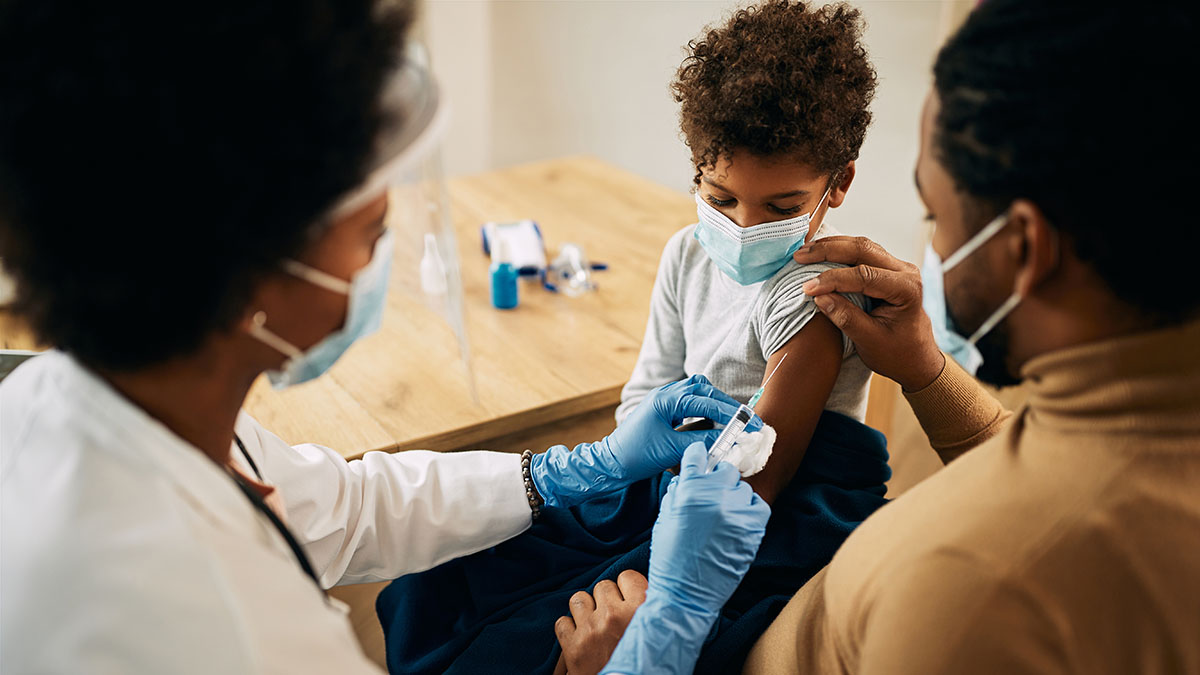
Fast-Tracking Pediatric Development Plans for COVID-19 Vaccines and Treatments

In this blog post, David Rhein and Michael Park, both associate directors of regulatory affairs and members of PPD’s regulatory affairs pediatric forum, discuss the regulatory mandates for the study of COVID-19 vaccines and treatments in pediatric populations. The post also covers initiatives to fast-track preparation of pediatric development plans and highlights the importance of communication of transparent information about these studies to the public.
In the European Union (EU) and United States, regulatory authorities have mandated that current agents used to treat COVID-19 must be studied in pediatric populations ages 5-17. Both agencies typically require that a pediatric investigation plan (PIP) and pediatric study plan (PSP) be agreed and submitted for new drug substances and new indications intended for use in children. Applications for marketing authorizations for such medicines must include the results of studies as described in these agreed plans unless a deferral or waiver is granted.
The European Medicines Agency (EMA) and the U.S. Food and Drug Administration (FDA) have taken measures to expedite pediatric plan development for COVID-19 therapeutics and vaccines, and they encourage developers to engage in early discussions with them.1,2 In May 2020, the EMA announced initiatives to fast-track PIPs for COVID-19 treatments and vaccines, including expedited review and rapid compliance checks.2 Such PIPs can be submitted when ready, and the overall PIP assessment timeline may be 20 days at minimum, a significant reduction from the standard 120 days. The decision notification will follow two days after the decision, a reduction from the standard 10 days, although the EMA manages these on a case-by-case basis depending on the plan’s complexity.2
In August 2020, the FDA and American Academy of Pediatrics (AAP) announced a partnership with the EMA and regulatory authorities in Australia, Canada and Japan to share pediatric-related COVID-19 topics and pediatric development plans for COVID-19 treatments and vaccines.3 In addition, the EMA and FDA released a joint commentary on the submission of PIPs and PSPs to help streamline administrative processes and facilitate efficient submissions.4 This guidance outlines similarities and flags overlaps between the PIP and PSP templates and includes a brief description of information required for each application. This is helpful for companies that have worked on a PSP but lack experience in PIP preparation and vice versa. We recommend customers examine this information when preparing PIPs and PSPs for COVID-19 treatments and vaccines because it may help streamline the process.
We reviewed the current PIPs for four COVID-19 vaccines — BNT162b2, mRNA-1273, AZD1222 and JNJ-78436735 (Ad26.COV2.S)5 — and note the following trends, which may be useful considerations for developers:
- All reviewed PIPs include the pediatric population from birth to younger than age 18.
- The overall assessment timeline ranged from 43 to 78 days, substantially shorter than the typical 120-day timeline.
- BNT162b2, mRNA-1273 and Ad26.COV2.S were planned to be assessed in adolescents separately from children.
- AZD1222 was planned to be assessed in both children and adolescents, but the trial in adolescents started first.
As per the agreed study plans in the PIPs, they are planned to be completed in 2024.5 Pfizer/BioNTech has received approval on inclusion of adolescents ages 12–15 in the U.S., followed by the EU and other countries. Subsequently, Pfizer/BioNTech is expected to file another extension of the EUA to include children ages 2–11. Moderna recently filed an EUA expansion to include adolescents ages 12–15.6
Conclusion
While the pediatric population may not have similar rates of COVID-19-related hospitalization or death as the adult population based on the current available data, there is a definite need to assess vaccines and treatments for this population.7
A 2021 study found that parents who are deciding whether their children should receive a COVID-19 vaccine are most concerned about vaccine safety and side effects.8 The ability of public health officials and health care providers to relay factual, transparent information to the public could help increase COVID-19 vaccine confidence, acceptance and coverage among parents and patients under 18 years of age.
The regulatory pathways for pediatric evaluation of vaccines and therapeutics in the EU and U.S. are well-defined, and we are currently seeing progress in accelerating access to safe and effective COVID-19 vaccines and therapeutics for children. The right expertise and strategic execution are essential to a successful pediatric development plan.